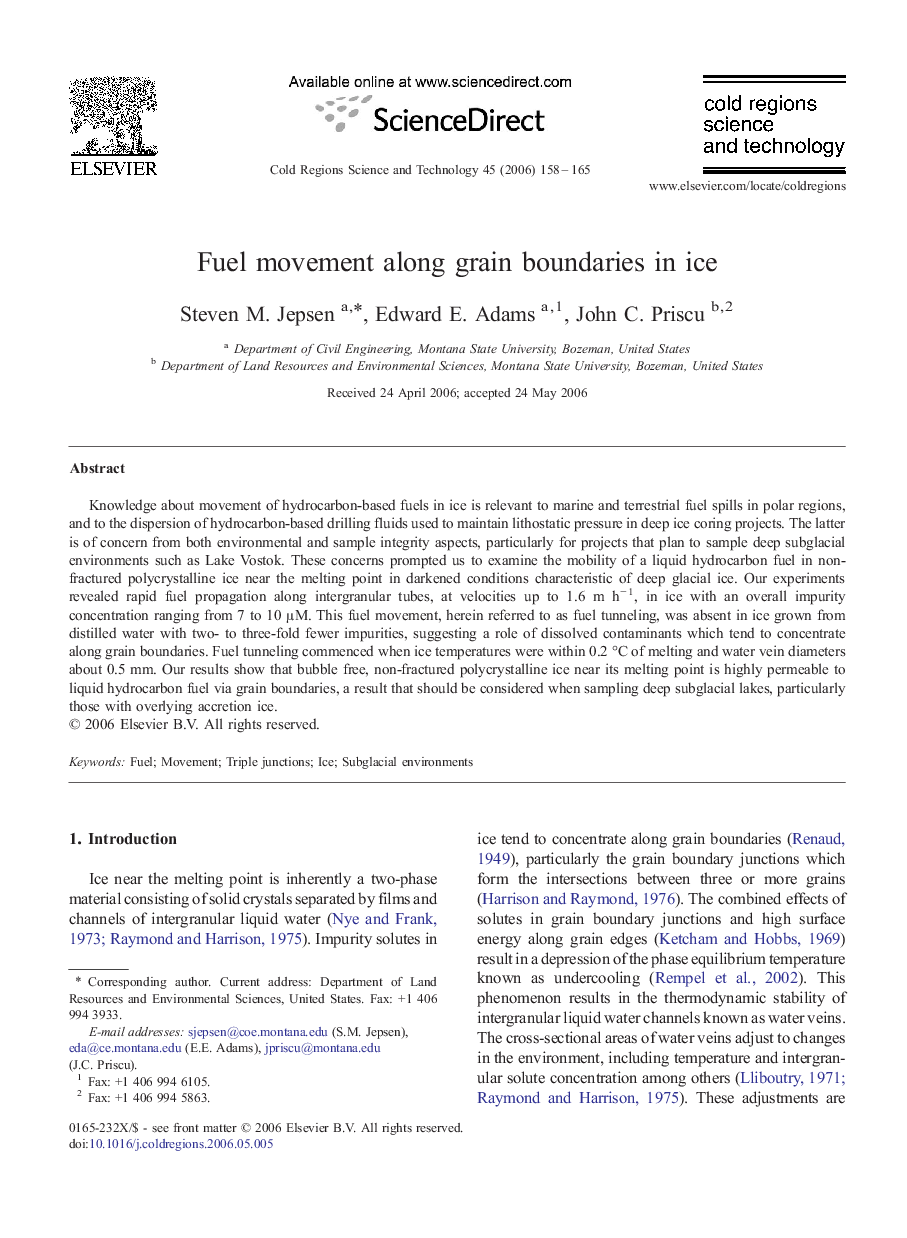| Article ID | Journal | Published Year | Pages | File Type |
|---|---|---|---|---|
| 4676779 | Cold Regions Science and Technology | 2006 | 8 Pages |
Knowledge about movement of hydrocarbon-based fuels in ice is relevant to marine and terrestrial fuel spills in polar regions, and to the dispersion of hydrocarbon-based drilling fluids used to maintain lithostatic pressure in deep ice coring projects. The latter is of concern from both environmental and sample integrity aspects, particularly for projects that plan to sample deep subglacial environments such as Lake Vostok. These concerns prompted us to examine the mobility of a liquid hydrocarbon fuel in non-fractured polycrystalline ice near the melting point in darkened conditions characteristic of deep glacial ice. Our experiments revealed rapid fuel propagation along intergranular tubes, at velocities up to 1.6 m h− 1, in ice with an overall impurity concentration ranging from 7 to 10 μM. This fuel movement, herein referred to as fuel tunneling, was absent in ice grown from distilled water with two- to three-fold fewer impurities, suggesting a role of dissolved contaminants which tend to concentrate along grain boundaries. Fuel tunneling commenced when ice temperatures were within 0.2 °C of melting and water vein diameters about 0.5 mm. Our results show that bubble free, non-fractured polycrystalline ice near its melting point is highly permeable to liquid hydrocarbon fuel via grain boundaries, a result that should be considered when sampling deep subglacial lakes, particularly those with overlying accretion ice.
